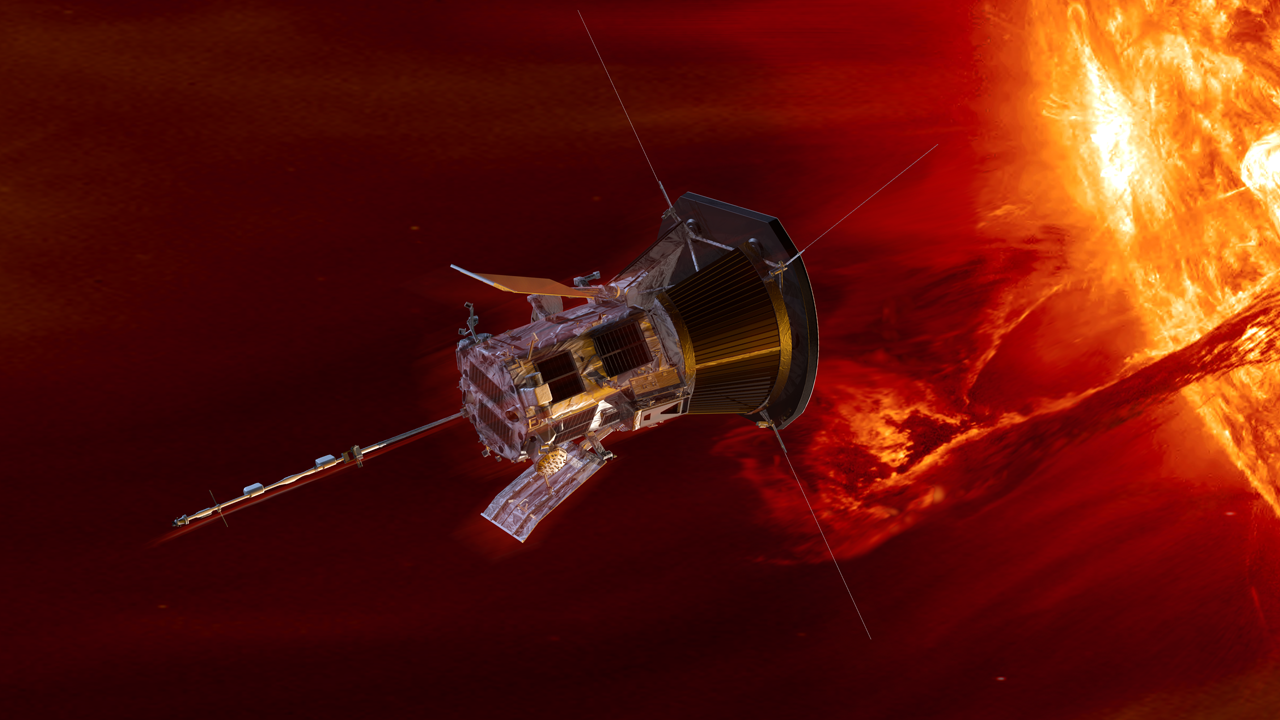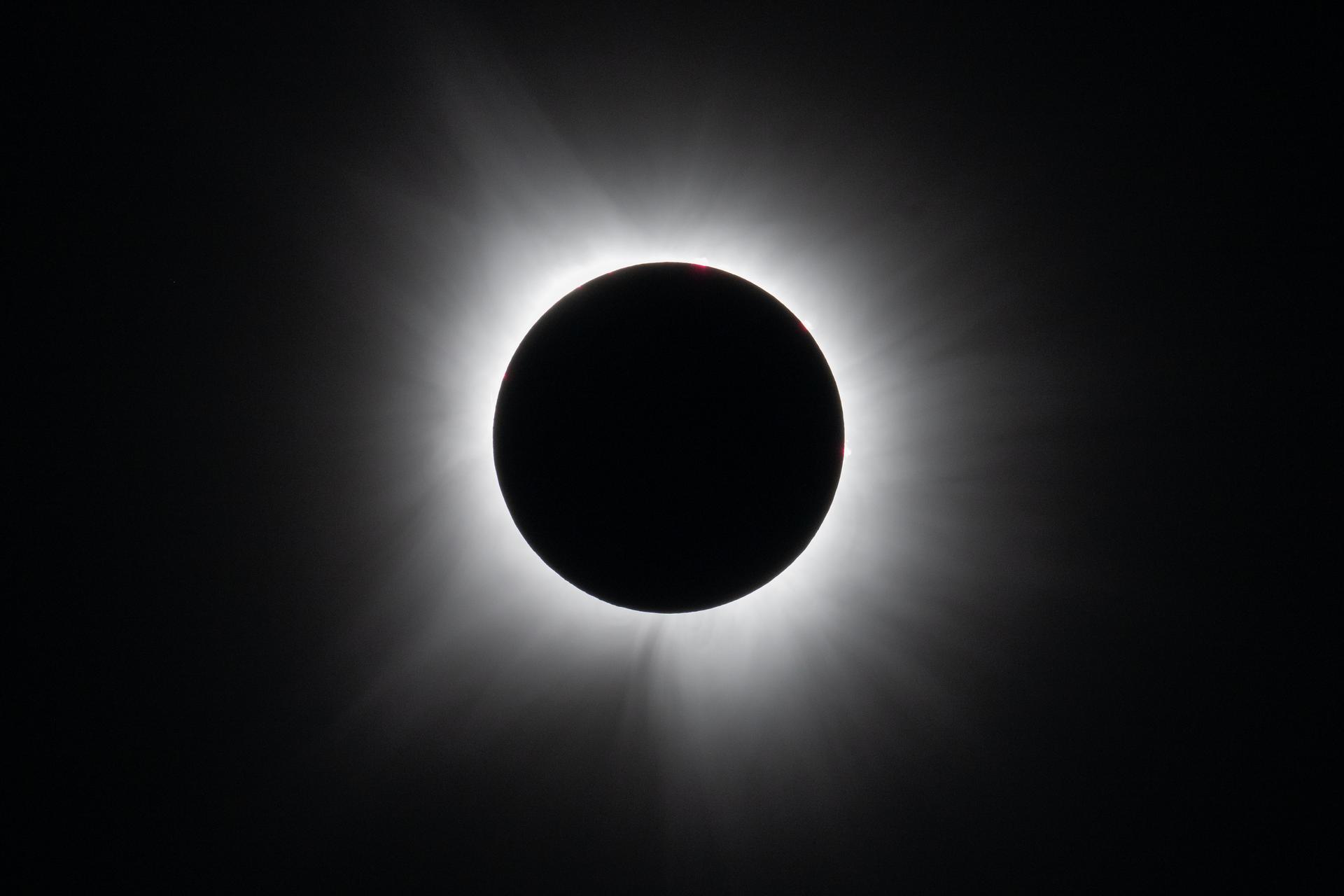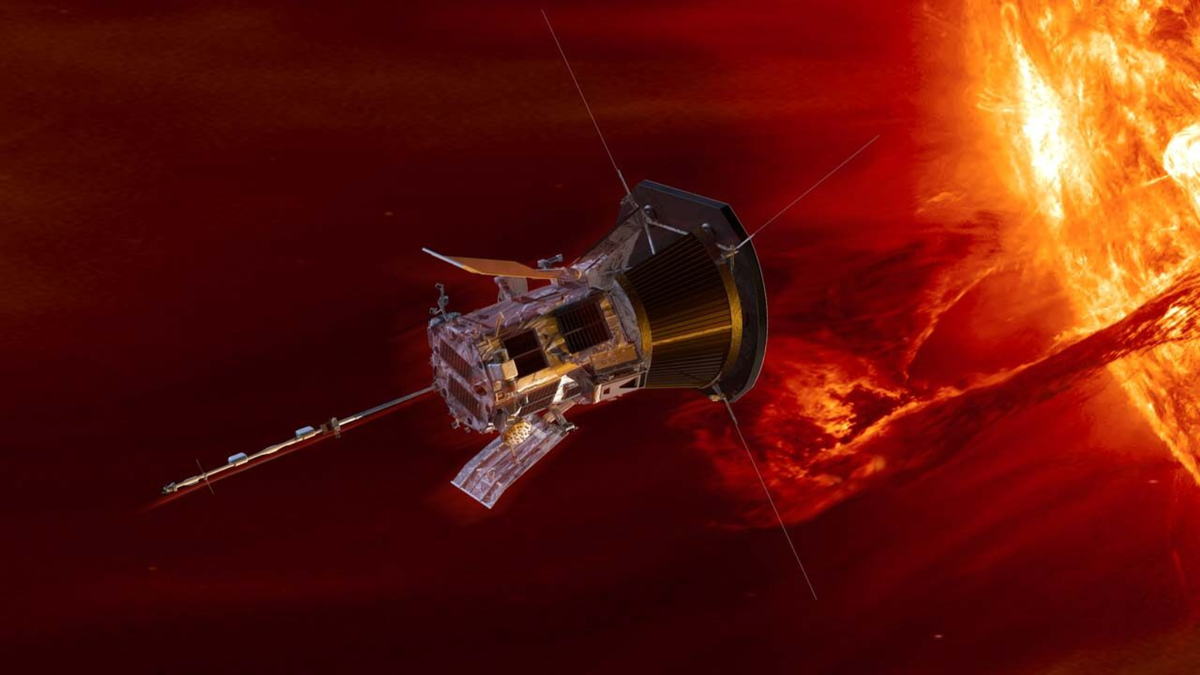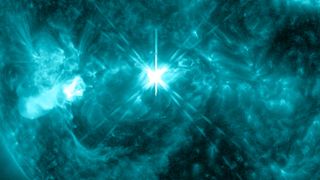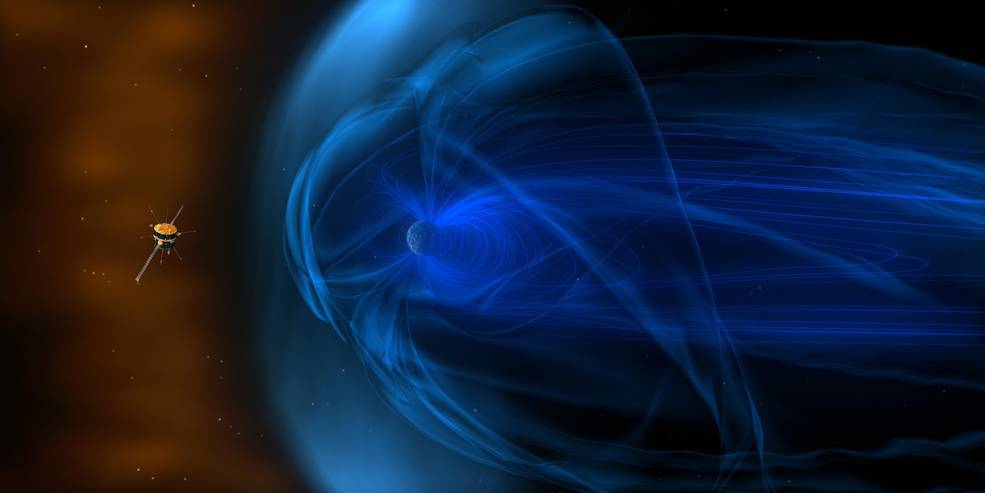5 Min Read NASA’s Parker Solar Probe Makes History With Closest Pass to Sun An artist’s concept showing Parker Solar Probe. Credits: NASA/APL Operations teams have confirmed NASA’s mission to “touch” the Sun survived its record-breaking closest approach to the solar surface on Dec. 24, 2024. Breaking its previous record by flying just 3.8 million miles above the surface of the Sun, NASA’s Parker Solar Probe hurtled through the solar atmosphere at a blazing 430,000 miles per hour — faster than any human-made object has ever moved. A beacon tone…
Read MoreTag: The Sun
Christmas solar flares erupt from the sun. Will they trigger aurora ‘fireworks’ as we close out 2024?
In the final hours of Christmas Day, the sun fired off four solar flares within less than three hours. The biggest flare of the series, recorded at a M7.3, erupted from sunspot region AR3938 on Dec. 25 at 10:15 p,m. EST (0315 GMT on Dec. 26). Solar flares are ranked and categorized by their power on a 4-level classification scale, with M-class the second strongest to the beastly X-class at the top. According to Spaceweather.com, this was part of a group of four different flares that happened within two and…
Read MoreScientists await signal from NASA’s Parker Solar Probe after historic close sun flyby. Will it phone home?
On the heels of a NASA spacecraft’s historic close flyby of the sun on Christmas Eve, scientists on Earth have one question on their minds: Did their probe survive as an epic Christmas gift, or is it a burned up lump of coal in space? For a few days, they simply won’t know, at least not until the spacecraft — NASA’s Parker Solar Probe — phones home with a simple “status beacon” on Friday (Dec. 27) to let its science team know it’s okay. But scientists behind the spacecraft’s sun…
Read More10 most powerful solar flares of 2024
It’s been a busy year on the sun, as it officially entered the peak of its roughly 11-year cycle of activity, known as solar maximum. In 2024, the sun launched over 50 X-class solar flares — the most powerful type of solar flare — at Earth. Solar flares are categorized by the level of X-rays they produce in a specific wavelength range (1 to 8 angstroms). Solar flare classes follow a logarithmic scale, with each flare class — C, M and X — 10 times stronger than the previous one.…
Read MoreWhat time is the NASA Parker Solar Probe’s closest sun flyby ever on Christmas Eve?
A NASA spacecraft is about to give astronomers an epic early Christmas present with the closest ever flyby of the sun on Dec. 24, but if you’re wondering exactly when the ambitious solar encounter will occur, don’t worry. We’ve got you covered. The NASA spacecraft, called the Parker Solar Probe, is on course for what will be a record-setting close flyby of the sun on Christmas Eve, when it will fly through the star’s outer atmosphere at 6:53 a.m. EST (1153 GMT) and pass within 3.8 million miles (6.1 million…
Read MoreScientists Share Early Results from NASA’s Solar Eclipse Experiments
5 Min Read Scientists Share Early Results from NASA’s Solar Eclipse Experiments On April 8, 2024, a total solar eclipse swept across a narrow portion of the North American continent from Mexico’s Pacific coast to the Atlantic coast of Newfoundland, Canada. This photo was taken from Dallas, Texas. Credits: NASA/Keegan Barber On April 8, 2024, a total solar eclipse swept across North America, from the western shores of Mexico, through the United States, and into northeastern Canada. For the eclipse, NASA helped fund numerous research projects and called upon citizen…
Read MoreNASA’s Parker Solar Probe is solving long-standing mysteries about the sun. Here’s what we’ve learned so far.
On Nov. 6, NASA’s Parker Solar Probe passed within 234 miles (376 kilometers) of Venus’ surface. The purpose of this close flyby was to accomplish a gravity-assist maneuver, in which the probe would steal some of Venus‘ momentum to change the spacecraft’s orbit and bring itself even closer to the sun. The Parker Solar Probe had already made several close passes of the sun, but the recent flyby was its closest, coming within about 3.8 million miles (6 million km) of the solar surface. That’s less than nine times the…
Read MoreHurricane Helene’s Gravity Waves Revealed by NASA’s AWE
2 min read Hurricane Helene’s Gravity Waves Revealed by NASA’s AWE On Sept. 26, 2024, Hurricane Helene slammed into the Gulf Coast of Florida, inducing storm surges and widespread impacts on communities in its path. At the same time, NASA’s Atmospheric Waves Experiment, or AWE, recorded enormous swells in the atmosphere that the hurricane produced roughly 55 miles above the ground. Such information helps us better understand how terrestrial weather can affect space weather, part of the research NASA does to understand how our space environment can disrupt satellites, communication…
Read MoreSun erupts with powerful X2.3 solar flare, triggers radio blackouts (video)
The sun erupted with an X2.3-class solar flare this morning, triggering radio blackouts The X-class solar flare was released from a sunspot region AR 3883 at 8:40 a.m. ET (1340 UTC) on Wednesday morning (Nov. 6). Sunspots are darker, cooler locations on the sun that measure the size of planets and denote where the sun’s strong magnetic field roils up to its surface. It was the sunspot region’s strongest flare yet. According to Spaceweather.com, the wait is on for scientists to receive data from the coronagraph on the joint NASA/European Space…
Read More30 Years On, NASA’s Wind Is a Windfall for Studying our Neighborhood in Space
5 min read 30 Years On, NASA’s Wind Is a Windfall for Studying our Neighborhood in Space An artist’s concept of NASA’s Wind spacecraft outside of Earth’s magnetosphere. NASA Picture it: 1994. The first World Wide Web conference took place in Geneva, the first Chunnel train traveled under the English Channel, and just three years after the end of the Cold War, the first Russian instrument on a U.S. spacecraft launched into deep space from Cape Canaveral. The mission to study the solar wind, aptly named Wind, held promise for…
Read More